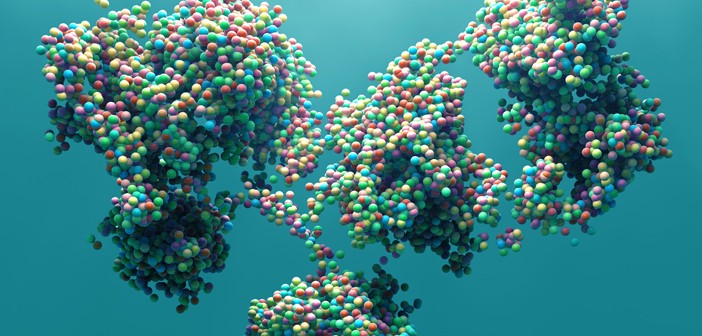Webinar Q&A follow up – Development of neutralizing antibody assays to support clinical safety assessment: when is a cell-based assay required and what challenges can you expect?

Thank you everyone who attended our live webinar “Development of neutralizing antibody assays to support clinical safety assessment: when is a cell-based assay required and what challenges can you expect?”. Below are some responses to the questions posed during the live event that we did not have time to answer. We hope this is a useful resource and thank our webinar attendees and our speaker, Danielle Salha, for their time.
Q) You mentioned ‘hook effect’ – would the effect be in regards to the concentration of drug or the level of neutralizing antibody?
A) The hook effect would be determined in regards to the level of neutralizing antibody by using the positive control sera above the HPC level.
Q) One of your case study slides referred to drug tolerance or interference, comparing a cell based assay vs LBA. There was a single concentration of a drug shown in the table. Would this concentration be the lowest concentration of a drug where you see an effect on the various assays? How do these concentrations compare to concentrations of the drug typically found in subject sera and do you take this into account?
A) I think you are referring to slide 25 and 26 in which the drug tolerance was two times higher in the CB assay. This represents the highest concentration of drug that still does not interfere in the assay. So the CB assay can tolerate up to 200 ng/mL with the ligand binding 50 or 100ng/mL.
Ideally it is always good to have an idea of the drug concentration from your PK results to determine whether this concentration is meaningful for your clinical study or not, by taking into account the time point relative to the sampling performed for the nAb determination.
Q) Have you found that FDA has accepted the principals in the white paper by Wu et al. (2016) in justifying use of LBA for the nAb assay?
A) The fact that it’s included in the 2016 guidance – that ligand binding approach could be used to replace CB assays with justification – indicates that they are open to it. I still think that they treat each case independently.
Q) On average, how long does it take to develop a cell based assay?
A) On average it takes 2– 3 months to develop a cell based assay.
Q) What is the required sensitivity for a nAb assay if the concentration of the PC is known?
A) There is no regulatory requirement for sensitivity limit for nAb assay, but the target to try to achieve would be similar to the screening assays which is 100ng/mL.
Q) Normally, samples are first tested for the presence of antibodies beforehand to assess the presence of neutralizing antibodies. Should the samples, which have to be tested with cells, be sterile?
A) Yes, the serum that will need to be tested by the CB assay needs to be kept sterile because most assays have an incubation period of a few days in the incubators that could promote bacterial or fungal growth if the sample is not sterile.
Q) Would you also recommend a cell based assay if the drug is an ADC?
A) Given that an ADC has several MoAs – the antibody portion and the toxin – a CB assay would be preferred.
Q) If the drug is a small peptide, would you assume that most of the anti-drug antibodies would also be neutralizing antibodies?
A) If the drug is a small peptide it may or may not even be immunogenic depending on the length and yes it is highly likely that if there is an immune response generated that it would be neutralizing, but there is no guarantee.
Q) How do you set PC levels and acceptance criteria with low assay range?
A) If your assay range is very small, consider changing the cell line. This may help considerably.
Q) Sample pre-treatments (e.g., acid) are typically not compatible with CB assays. How do you address this?
A) Yes, the sample acid treatment cannot be used when combined with cells so either a neutralizing process should be used followed by a pre-incubation step with a labeled drug with several washing stages before transferring to a cell suspension.
Q) How do you handle the issue of drug tolerance where levels present in samples cannot be achieved?
A) If the drug tolerance level is not high enough, the assay needs to be further optimized by looking at several parameters, longer incubation periods and temperatures among others.
Q) Could you give a definition for titer?
A) An antibody titer is a measurement of how much antibody an organism can produce following an immunization phase that recognizes a particular epitope(s). This is expressed as the inverse of the greatest dilution that can produce a positive result.
Q) Under what circumstances would use of a monoclonal positive control be acceptable?
A) When the drug is a small peptide indicating that very few immunogenic epitopes can be identified.
Q) What about anti-sense oligo? Is a nAb assay relevant at all and if so, what would be the applicable format taking their MOA into consideration
A) From what I have heard and experienced, nAb assays are not required for ASOs given what is known about their MoA.
Q) Can you use a monoclonal antibody as a positive control, instead of having to cope with the variability of polyclonal sera?A) If the use of monoclonal antibodies is considered, it would be advisable to have a panel of mAbs that are known to bind to different neutralizing epitopes.

